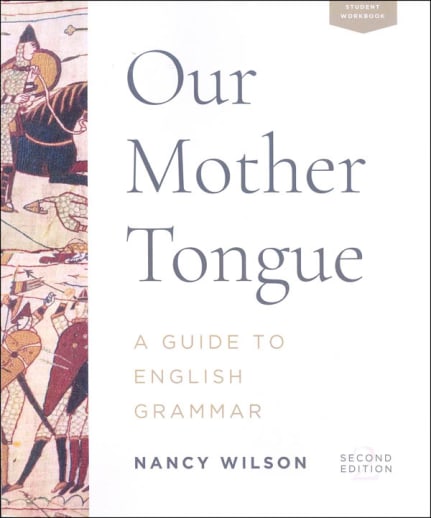Studying our language enables us to choose our words wisely, enjoy and appreciate great literature, understand the thoughts of others, give clear and correct expression to our own thoughts, and train our minds to think in an orderly fashion. Designed to give a comprehensive overview of all aspects of our language, Our Mother Tongue can be used as a review and reference tool for the instructor or for introducing an older student to a systematic examination of our language. Starting with the basic facts of grammar (the eight classes of words and the parts and types of sentences), author Nancy Wilson provides a thorough examination of all the major concepts in English by looking at the special properties of nouns, pronouns, verbs, verbals, and modifiers. There are examples, explanations and definitions followed by exercises. Many of the examples and exercise sentences are taken from Scripture and from great English writers. Adding spice to this examination are periodic sidebars detailing the development of the English language. Did you know that many of our grammar rules came into being in the eighteenth century when the Enlightenment inspired thinkers to reduce everything to neat, tidy, governable systems? Diagramming is definitely a part of this overview. Like all graphic organizers, the use of diagramming trains the student to quickly analyze the subject matter - in this case, sentence structure.
Changes in this 2nd edition (2019) include a new layout, daily schedules, a new section on the Oxford comma, fun grammar quotes and increased numbers of exercises. The Student Workbook provides instruction, examples, sidebar info, and several sets of exercises for each section.

